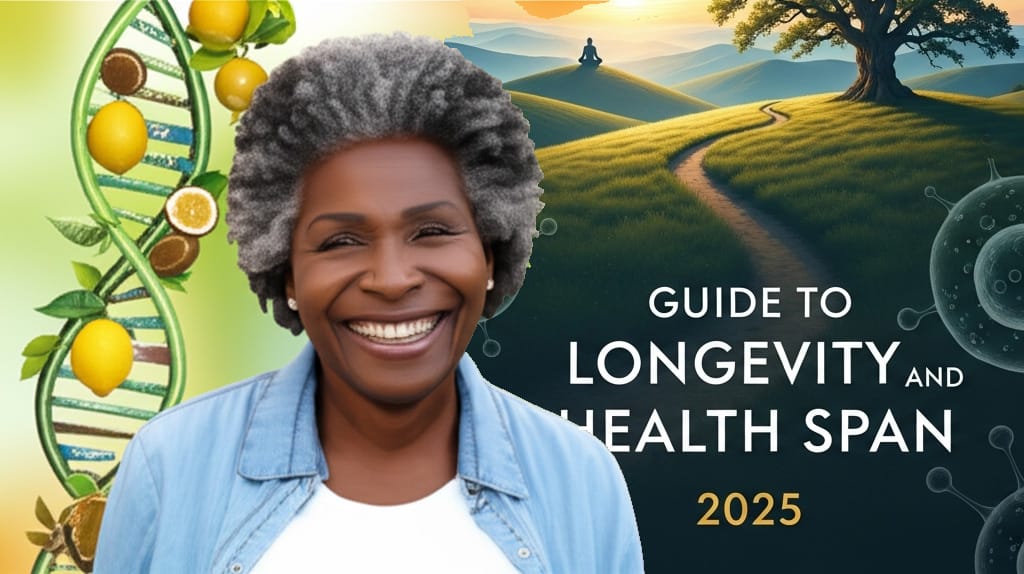In his groundbreaking book, Super Agers, Dr. Eric Topol introduces a powerful framework for health and longevity called “Lifestyle+.” This approach moves beyond the basics of diet and exercise to create a complete picture of what it takes to live a healthier, longer life. It integrates crucial factors like environmental conditions, social connections, and socioeconomic status, providing a roadmap for achieving a vibrant second half of life.
The core idea is to leverage both proven practices and new scientific breakthroughs to improve our health span—the number of years we live in good health—often without relying on expensive or complex technologies.
The Core Pillars of Healthy Aging: Diet, Exercise, and Sleep
The foundation of long-term health rests on three interconnected pillars: what we eat, how we move, and how well we Sleep. While these may seem like simple concepts, modern science has revealed their profound impact on our bodies.
Diet: Navigating the Complex World of Nutrition
The saying “you are what you eat” is truer than ever, with poor diet linked to 22% of all deaths worldwide. Here’s a breakdown of what the science says about creating a diet for longevity.
- Avoid Ultra-Processed Foods (UPFs): Dr. Topol describes these as “alien, industrially produced, unnatural substances.” UPFs are packed with additives and designed for rapid digestion, causing blood sugar and insulin spikes. High consumption is linked to a staggering 80% higher risk of metabolic syndrome, a 66% increased risk of cardiovascular death, and a 62% increase in all-cause mortality. Limiting them is one of the most critical dietary changes you can make.
- Rethink Sweeteners and Salt: High sugar intake, especially from beverages, is definitively linked to higher mortality. While data on artificial sweeteners is mixed, it’s generally unfavorable. Similarly, high salt intake (over 5 grams/day) is tied to hypertension and reduced brain blood flow.
- Focus on Macronutrient Quality:
- Carbohydrates: Choose high-quality, slow-digesting carbs like dietary fiber (25-30g/day), non-starchy vegetables, legumes, and whole grains. These are associated with significantly reduced mortality.
- Proteins: Older adults may need more protein (above the standard 0.8 g/kg) to combat age-related muscle loss. However, very high-protein diets, especially from animal sources, can promote inflammation.
- Fats: Quality trumps quantity. Unsaturated fats from plant sources are linked to a longer life, while ketogenic diets have been associated with higher cardiovascular risk.
- Choose Beverages and Meats Wisely:
- Coffee and Alcohol: Coffee consumption (around four cups daily) is linked to up to a 30% reduced mortality risk. In contrast, Dr. Topol states that “both moderate and heavy drinking does one no good,” as alcohol is a classified carcinogen.
- Meat: Processed meats are carcinogenic, and red meat is “probably carcinogenic.” Plant-based diets, on the other hand, are consistently linked to better health outcomes, including a 23% lower risk of type 2 diabetes and significant protection from all-cause mortality.
- Embrace the Mediterranean Diet: Supported by numerous randomized trials, this diet—rich in fruits, vegetables, whole grains, nuts, and healthy fats like olive oil—is proven to reduce mortality from all causes, including heart disease, cancer, and neurodegenerative diseases.
- Explore Personalized Nutrition: We are all biologically unique. Emerging tools like continuous glucose monitors (CGMs) offer a window into your personal nutritional health, showing how your body responds to different foods and helping tailor a diet that works specifically for you.
Exercise: The Most Potent Medical Intervention Known
Dr. Topol declares that “Exercise may be the single most potent medical intervention ever known,” surpassing any drug in its ability to promote healthy aging across every organ system.
- Multisystem Benefits: Regular exercise improves cardiovascular health, enhances brain function, boosts the immune system, reduces inflammation, and improves insulin sensitivity.
- A Quantifiable Impact: Research suggests that every minute of exercise can add five to seven minutes to your life. Walking 450 minutes a week has been associated with living 4.5 years longer.
- Mental Health and Cancer Prevention: Exercise is a powerful tool against depression, anxiety, and stress. It also plays a key role in cancer outcomes, with studies showing improved survival and a dose-response reduction in risk across many cancer types.
- Combine Aerobic and Strength Training: Beyond cardio, resistance training is crucial. Just 60 minutes a week is linked to a 25% reduction in all-cause mortality and helps preserve vital muscle mass. As Dr. Topol says, “If I’m going to be old, I’d rather be strong and old!”
- It’s Never Too Late: The benefits of exercise are available at any age. A 93-year-old who began exercising in his seventies achieved fitness levels comparable to a young adult, proving you can start anytime.
Sleep: The Brain’s Essential Dishwasher
Sleep is a “non-negotiable biological state” that is fundamental for restoration and health. A key discovery is the brain’s glymphatic system, which acts like a plumbing system to clear out metabolic waste and toxic proteins like beta-amyloid during deep sleep.
- Consequences of Poor Sleep: Just one night of sleep deprivation can increase beta-amyloid, a precursor to Alzheimer’s. Chronic poor sleep (six hours or less) is linked to a >20% increased risk of dementia, along with higher mortality and impaired immune function.
- The Optimal Duration: Studies suggest that around seven hours of sleep is the sweet spot. Both significantly less and more sleep are associated with cognitive decline and health risks.
- Practical Sleep Hygiene: To improve sleep, maintain a consistent schedule, exercise regularly, create a cool, dark, and quiet bedroom, and avoid blue light from screens before bed. It’s also crucial to address conditions like sleep apnea.
Beyond the Basics: Environmental and Social Factors
The “Lifestyle+” model recognizes that our health is profoundly shaped by the world around us.
- Environmental Toxins: Exposure to air pollution, microplastics, and “forever chemicals” (PFAS) is a growing threat. A landmark study found that microplastics in arterial plaques were linked to a 4.5-fold higher risk of heart attack, stroke, or death.
- Social Determinants Social determinants of health: Socioeconomic status is a major risk factor for premature mortality, as significant as smoking. Loneliness and social isolation are also critical concerns, associated with a 32% increased risk of death from all causes.
The Future of Prevention: High-Tech Health Insights
Cutting-edge technology is opening new doors for personalized health management and disease prevention.
- Proteomic Organ Clocks: By analyzing thousands of proteins in the blood, scientists can now measure the biological age of individual organs. This can identify accelerated aging in the heart or brain long before disease develops, offering a chance to intervene.
- Breakthrough Alzheimer’s Blood Test (p-Tau217): This highly accurate test can predict Alzheimer’s risk more than 20 years before symptoms appear. This provides a long “runway of opportunity” to use lifestyle interventions to potentially delay or prevent the disease.
- AI and Proteomics: Combining artificial intelligence with the ability to measure thousands of proteins is revolutionizing our understanding of health, aging, and disease, paving the way for truly personalized prevention strategies.
Conclusion: Your Path to a Healthier, Longer Life
Achieving the health and vitality of a Super Ager is a multifaceted journey. It requires a holistic “Lifestyle+” approach that combines conscious choices in diet, exercise, and sleep with an awareness of environmental and social factors. While advanced technologies offer exciting new insights, they ultimately empower us to apply the fundamental principles of a healthy lifestyle more effectively. By embracing this comprehensive view, we hold the immense promise of adding many more healthy, vibrant years to our lives.











